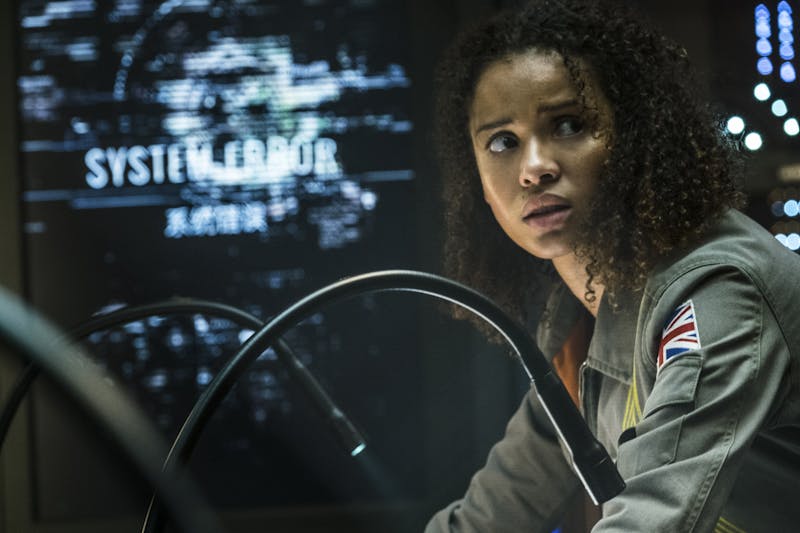You can still find the MySpace pages for the characters of Cloverfield (2008) online. The movie’s viral marketing campaign was one of the first true successes of the genre. I still remember the first teaser: handheld footage, the Statue of Liberty’s head rolling in the street, a military title card, a shadow. Mysterious websites hinted at the secrets of the movie’s universe.
The key to both the marketing and the movie was intrigue. Cloverfield was a striptease of a film, hiding the monster then revealing bits of it in a peekaboo dance. Much of the online tie-in barely made sense—or rather, it built a universe of information that only tangentially related to the film itself (see: the Slusho! drink and the Tagruato corporation, which you could call up on the phone).
Director Matt Reeves has called these elements “tentacles” that grew out of the movie concept, and they were fun. In retrospect, however, they were also basically a new kind of advertisement, customized for the internet imagination. But those online ads chimed firmly with the mysterious nature of the movie they trailed, and so they made a conceptually satisfying kind of sense.
This weekend, Netflix premiered The Cloverfield Paradox right after the Super Bowl, having announced it only four hours earlier. Like the first Cloverfield’s marketing campaign, the last-minute announcement of The Cloverfield Paradox was something between a stunt and an experiment. But this time around, the stunt was also probably a last-ditch effort to make money off a bad movie. The film originally belonged to Paramount. Perhaps seeing that it was not good enough to make money in theaters, the studio handed it off to Netflix. Seeing an opportunity to experiment with a reliably buzz-generating franchise, Netflix tried out a Super Bowl spot, and reeled in viewers. Everybody wins, except us.
The movie is the third in this universe and delivers the foundation story for the two preceding movies, Cloverfield and 10 Cloverfield Lane (2016). (A fourth, a World War II movie called Overlord, is due in 2018.) The first was a straightforward monster movie, executed in a new way. Blair Witch-style, it was entirely “pieced together” from supposedly found footage, filmed by young New Yorkers taken by surprise at a party when an enormous beast started smashing up the city. It was thrilling and new and very, very scary.
10 Cloverfield Lane was originally conceived as a standalone film, but was then folded into the Cloverfield universe under Bad Robot’s production. Unlike its predecessor, it plays out in traditional third-person fashion, telling the story of a young woman “rescued” from a car crash by two men living in an underground bunker. John Goodman’s performance as the bunker’s proprietor was particularly terrifying. According to him, there are monsters ravaging the earth’s surface. But is he telling the truth? The principle of the unknown is the chief connective tissue between 10 Cloverfield Lane and Cloverfield, alongside unseen terrifying beasts, of course.
In a whole new departure, The Cloverfield Paradox takes place in space. The excellent Gugu Mbatha-Raw plays Ava, a bereaved mother whose husband is far below on the earth’s surface. Her colleagues are Kiel (David Oyelowo), Tam (Zhang Ziyi), and Mundy (Chris O’Dowd), among others. In one of the movie’s most refreshing features, the cast speaks English but also Mandarin; Tam, in fact, never speaks English.
A big genre change makes sense for the Cloverfield universe as it has played out thus far, and the movie begins promisingly. The crew of the spacecraft Shepard are trying to get a particle accelerator going so that they can generate energy for a war-torn, resourceless earth. In smashing the old Higgs-Boson particle, however, they rip apart spacetime. Oops! The craft is yanked into another dimension, and certain worrying things start happening. An arm comes off. Where did the worms go? What’s yelling in the wall? Will they ever get back to earth? Explanations for the existential conditions of Cloverfield movies one and two start generating, but so do little space-hijinks vignettes.

In the end, the plot is disappointingly simple. The terrors of the first two movies are explained away in a summary flourish, and their mysteries neutralized. The script is not good. Somebody actually speaks the line, “We are all going mad!” Something about the production values screams television, though it’s difficult to put one’s finger on it. Perhaps the problem is the sheer number of deaths that afflict the crew of the Shepard. Each time one of them is knocked off, a new space-movie cliché comes out: This one is frozen by the space-cold, that one gets exploded out the window. There’s plenty of intrigue and suspicion, but it’s all a bit familiar.
The Cloverfield Paradox is not without its charms, however. The cast is very fine, and great use is made of “space lighting”—those lovely reds and greens flashing from consoles against the handsome faces of astronauts. Smart references to other movies abound, including Alien, a little predictably, but also The Wizard of Oz and Solaris.
Some of the effects are delicious, too. Mundy is a bright and funny spot in the film. He is forever repairing things with a gun that issues chemical metal-like ooze. When a magnetism mishap takes place, however, the ooze starts engaging in an antic, claymation dance. Like little vines emerging from a wall, they creep up behind him.
Overall, unfortunately, The Cloverfield Paradox is a sad episode in the franchise, which had until now proven among the most original in Hollywood’s identikit arsenal. Viewers are tired of backstory, a blight that has plagued movie series since Star Wars. The stream of explanations for explanations for explanations—as, for example, in the Alien prequels Prometheus and Alien: Covenant—is sapping the mystery out of sci-fi, which is its soul. Now that we know how the Cloverfield universe got its monsters, I’m not sure that they’re very scary anymore.
